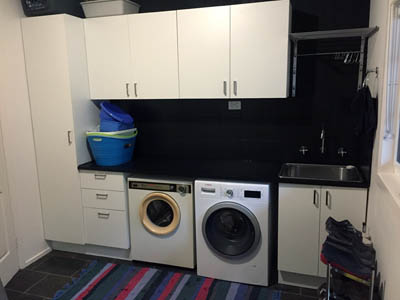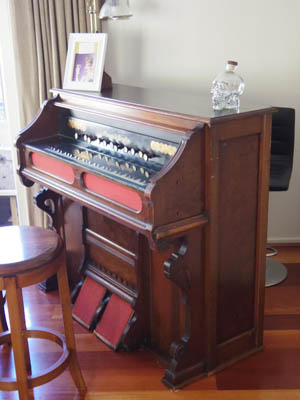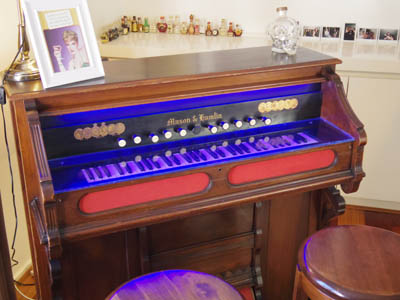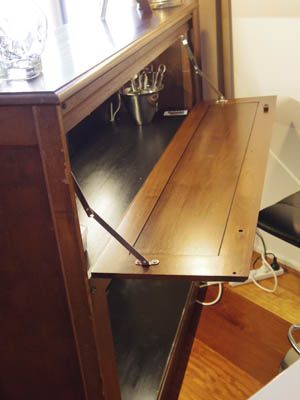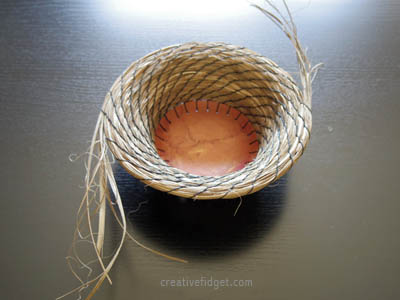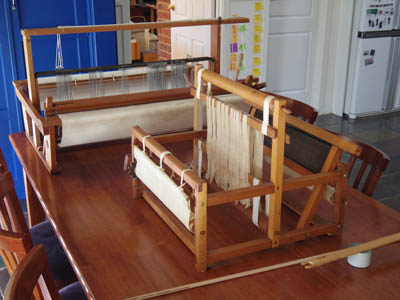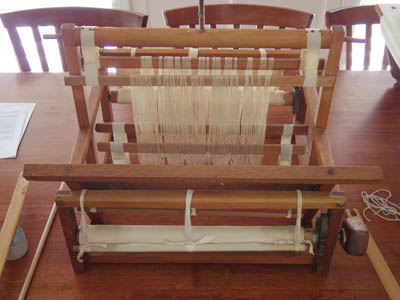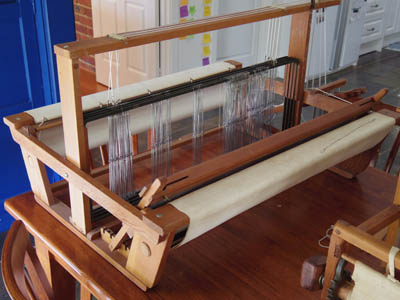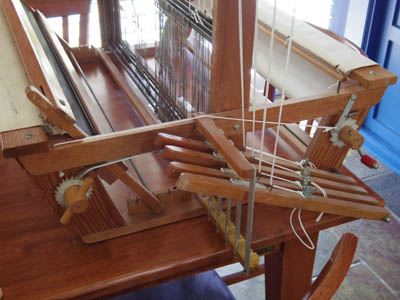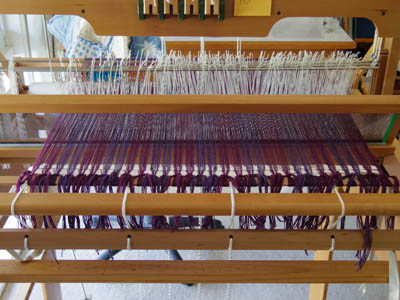January:
First project finished in 2015 was the Bunny Mink Scarf with inlay.
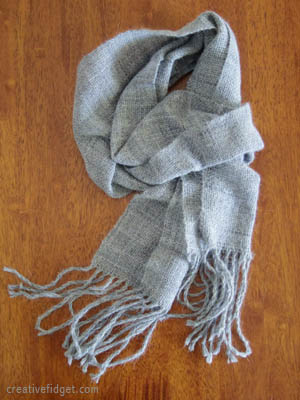
It was a good month for weaving. We finally got the pedals on the table loom, which made weaving much faster.
However, the next rigid heddle project, the Memory Scarf, was tortuous to weave.
February:
Paul and I put together a pair of Bedside Bookcases.
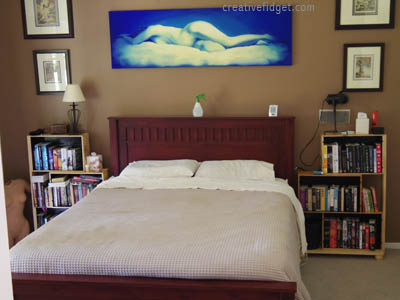
Not a project, but it felt like one: I left Pinterest. And never looked back except with relief.
March:
I twisted my ankle badly, which is probably why the only project I managed for the month was the Stitchy Shirt.
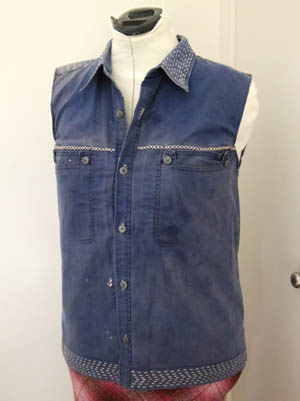
April:
I made a Shoe Modification ready for my trip to Europe.
A little less work and more down time on this trip, so I managed to stitch a
Beetle Pendant while I was travelling.

May:
I made a Flamingo Pendant as a thank you present for a friend.
A post-trip bout of finishitis took hold, where I finished the Ribbon Scarf…
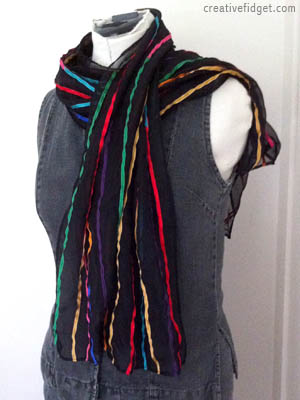
…Fair Isle Beanie…
… and Paua Ruanna Collar.
June:
A simple tweak turned my stiff I-cord Scarf into a relaxed, loopy scarf.
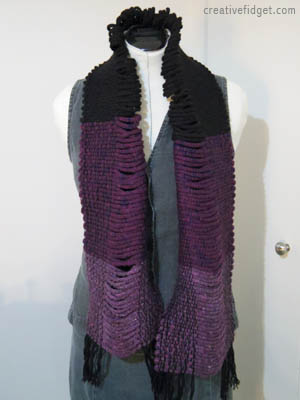
I finished the Silk Stripe Placemats.
Some knitwear and scarves were spruced up on Overdyeing Day.
I went a little overboard making a Gingerbread House.

July:
Giving up on altering it yet again, I turned the Origami Bolero into the Origami Bolero Scarf and the sleeves of the Gift Yarn Jacket into the Gift Yarn Scarf.
After a sudden and intense love affair with a pin loom, the Neon Blue Blanket was born.
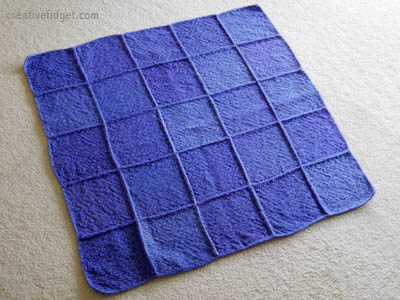
More weaving produced the Silksation Scarf.
And I replaced the sleeves of the Gift Yarn Jacket to make it the Blue Sleeves Jacket.
August:
Craft Day among friends was Refashioning Day (dress & two tops) for me.
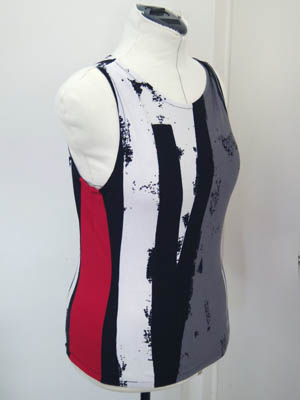
I tried a little simple knitting to make Capucine.
September:
With the leftovers I made a Capucine Cowl.
An experiment with circular weaving resulted in the Tapestry Hat.
And my determination to try weaving with fine yarn meant I finally produced the Scary Tea Towels for my Mum.
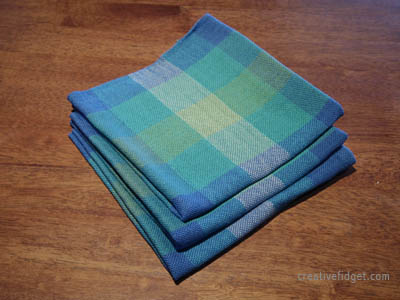
Then I lived up to my blog name and, perhaps triggered by all the landscaping preparations, became a little obsessed with jewellery-making, refashioning old pieces to make the Washer Necklace and Tiger Tail Bracelet.
October:
I finally used some paper beads to make Paper bead jewellery.
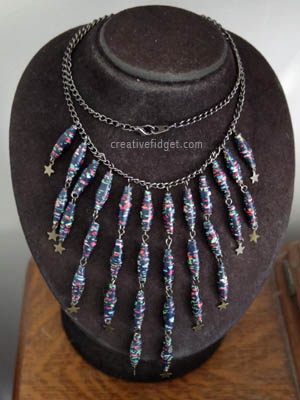
But the weaving continued, with another pin loom project, the Hunky Hank Shawl.
Colourful beads suggested to me a Tinkle Bracelet for a friend.
While for myself I made Seed Bead earrings & necklace, though by then the landscaping was nearing its end and the jewellery-making obsession had run it’s course.
November:
A simple solution led to me finally finishing the Art Necklace.
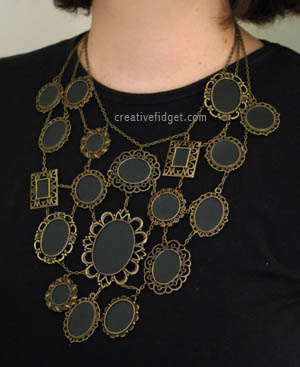
I started 50 Cards by Christmas 1, 2, 3, 4, 5, 6, 7, 8-9, 9-10.

December:
While way on a solo writing retreat, escaping the beginning of the new garage foundations work, I made some Inkle bands.
For the New Year, I bought myself a Katie Loom!
And I embellished a cardigan:
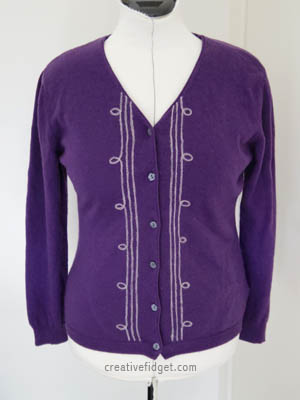
Overall, it feels like I got less craft done this year than usual. RSI and a sprained ankle held me back in February and March, and I was away for most of April and part of November. Then there was all the landscaping and garage preparations and ongoing tasks that ate up mornings and weekends.
Thanks to the latter, I was exhausted by the middle of November and behind schedule with work. I reconnected with both writing and craft during my solo writing retreat week. In fact, I learned something useful. Because I wanted to avoid a sudden increase of typing, which would lead to RSI, I did craft in the mornings – weaving and card-making which didn’t work my hands too much. By the afternoon I was relaxed and my mind had been working over the story while I crafted, so the writing went well. Since I’ve been home, I’ve been doing the same, with varied success. I can’t help that the garage build and various chores are a distraction, but I can avoid spending mornings stuffing around on the internet – which just adds to the wear and tear on my hands and back. It is hard to switch into work mode, however, when the craft project sucks me in and I don’t want to stop.
A lot of refashioning, modification and reusing of materials were part of projects in 2015. When I did try something new, it was in weaving mostly, and also a few jewellery projects. In both I finally tackled and/or finished a few very long term projects – the scary tea towels and art necklace.
I only finished one portrait this year thanks to starting classes two months late, though the second is close to finished. That’s disappointing, as I was aiming to do four.
This year’s aim with the house was to take a break from big projects and stick to small ones while the pool fence, landscaping and garage preparations were done. The pool fence was ridiculously stressful and complicated. The actual landscaping was fast and stress-free, but the preparations before and pre-mulch preparations afterwards took up far more time than I’d expected.
The garage project is slow and ongoing, but mostly Paul’s task so I’m free to chase the work deadline and craft in 2016. I’m in a much more optimistic frame of mind than I was six weeks ago. In fact, the silly season, which I usually find distracting, stressful and a bit lonely, felt like a welcome break and opportunity to get everything back on track.
Happy New Year!

